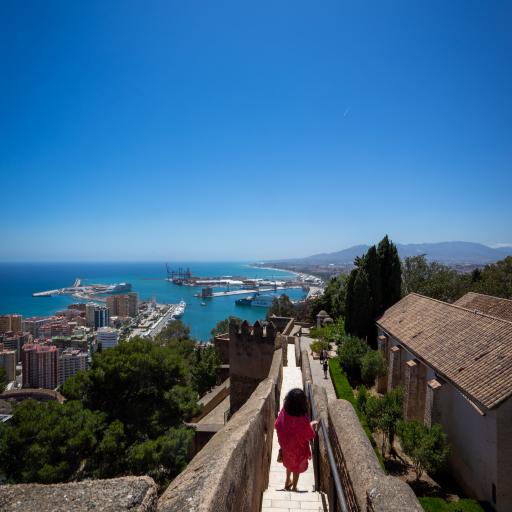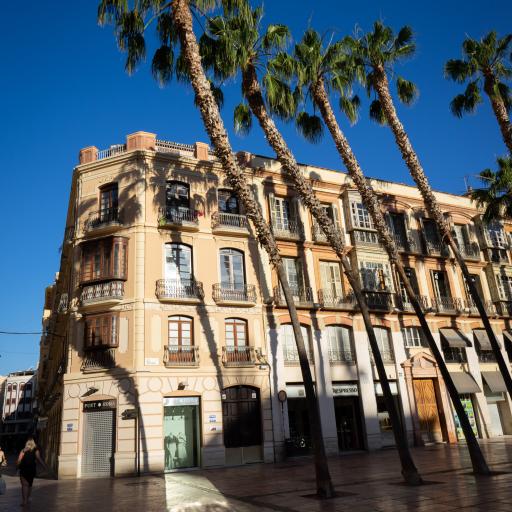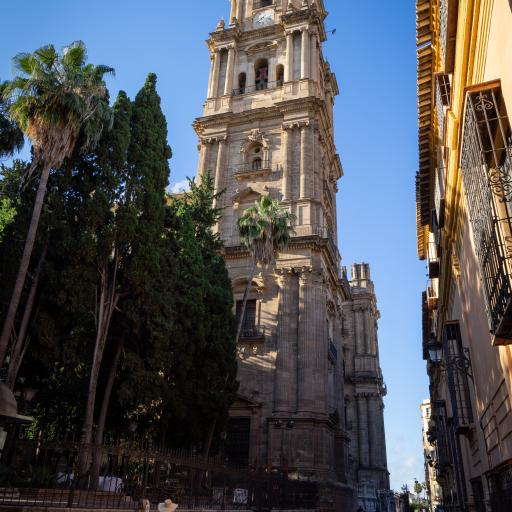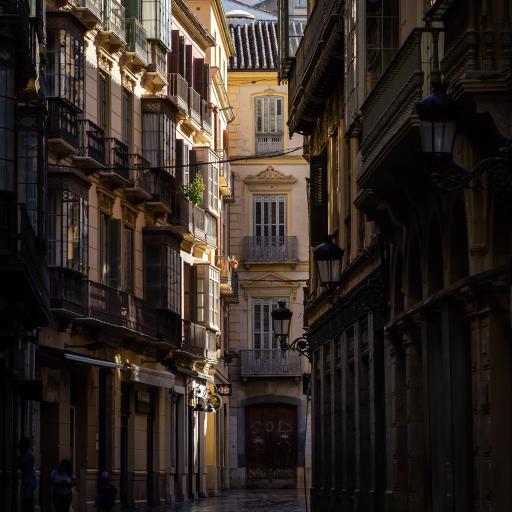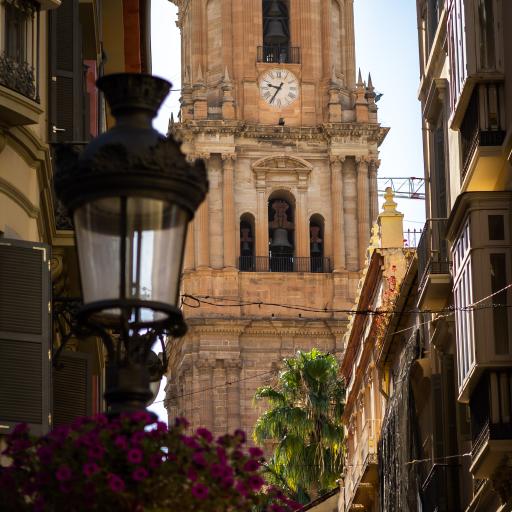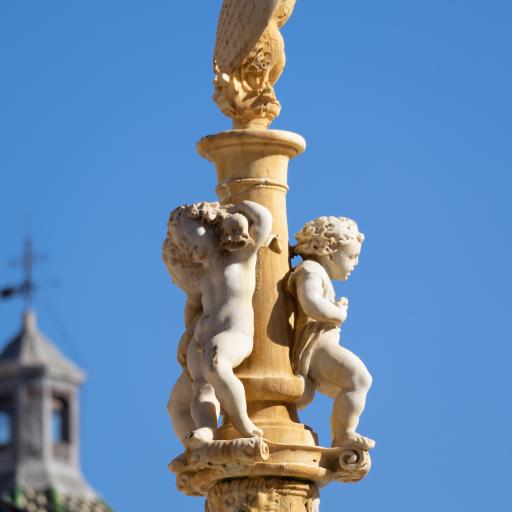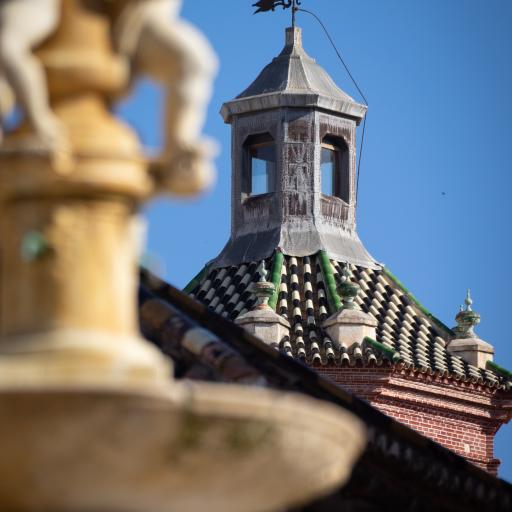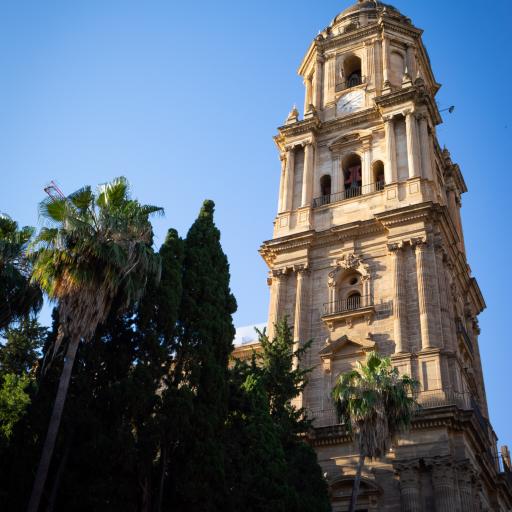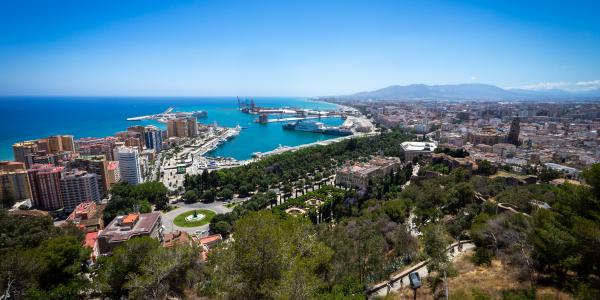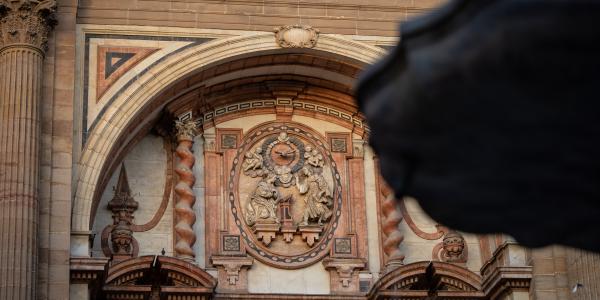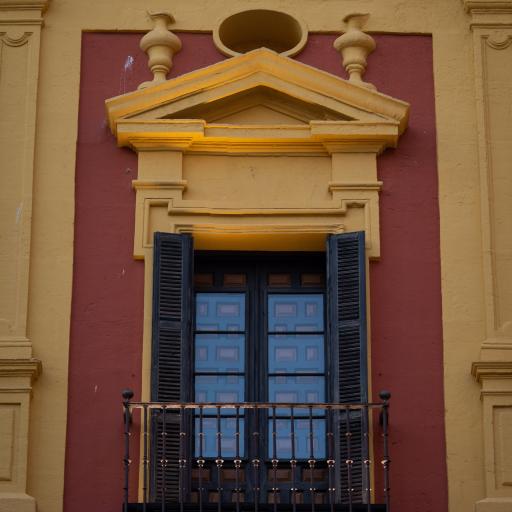Phoenicians from Tyre founded a colony named Malake[11] about 770 BC (Punic: 𐤌𐤋𐤊𐤀, MLKʾ). The town controlled access to the Guadalmedina and served as a waypoint on trade routes between Phoenicia and the Strait of Gibraltar. Like other Phoenician colonies, it fell under Carthaginian rule during the 6th or 5th century BC. The Phoenician and Later Roman urban core developed around an area running from the Gibralfaro Hill to the mouth of the Malaca flumen (Guadalmedina).
After the Punic Wars, the Roman Republic took control of the town known to them as Malaca. By the 1st century BC, Strabo alluded to its Phoenician profile, in contrast to the hellenized characteristics of the neighbouring settlement of Mainake.
Transformed into a confederated city, it was under a special law, the Lex Flavia Malacitana. A Roman theatre was built at this time. After the fall of the Western Roman Empire, it was ruled first by the Visigoths. The city was taken c. 552 by the Byzantine Empire; either Malaca or Carthago Nova possibly then becoming the capital of the province of Spania. The Byzantines restored and expanded the docks, thus consolidating the fishing and trading tradition the city already enjoyed. The city was retaken by the Visigoth King Sisebut in 615. The Islamic conquest of Málaga (rendered as مالقة—Mālaqah—in Arab sources) by Arab and Berber forces took place in 711 or perhaps 713. Following a period of diminished importance during the early stages of the emiral period already in force since before the conquest, Málaga was fully Islamized by the end of the aforementioned period in the wake of Muhammad I's attributed intervention in the urban configuration as a medina.
After the Punic Wars, the Roman Republic took control of the town known to them as Malaca. By the 1st century BC, Strabo alluded to its Phoenician profile, in contrast to the hellenized characteristics of the neighbouring settlement of Mainake.
Transformed into a confederated city, it was under a special law, the Lex Flavia Malacitana. A Roman theatre was built at this time. After the fall of the Western Roman Empire, it was ruled first by the Visigoths. The city was taken c. 552 by the Byzantine Empire; either Malaca or Carthago Nova possibly then becoming the capital of the province of Spania. The Byzantines restored and expanded the docks, thus consolidating the fishing and trading tradition the city already enjoyed. The city was retaken by the Visigoth King Sisebut in 615. The Islamic conquest of Málaga (rendered as مالقة—Mālaqah—in Arab sources) by Arab and Berber forces took place in 711 or perhaps 713. Following a period of diminished importance during the early stages of the emiral period already in force since before the conquest, Málaga was fully Islamized by the end of the aforementioned period in the wake of Muhammad I's attributed intervention in the urban configuration as a medina.

